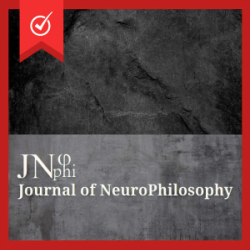A Phenomenological 4E Eliminative Materialism: Consciousness as Neuromuscular Adaptation “In Virtue of Which” Movement Affordances Are Disclosed
In this paper, Arturo Leyva advances a novel framework called “phenomenological 4E eliminative materialism,” integrating two crucial currents in the contemporary philosophy of mind: eliminative materialism and 4E (embodied, embedded, enactive, extended) cognition. Traditional eliminative materialism contends that folk-psychological notions—like beliefs, desires, sensations, or qualia—do not map onto scientifically valid entities and will eventually be abandoned. However, mainstream eliminativist approaches tend to privilege a brain-centric account, leaving the influence of bodily and environmental factors relatively unclear. By contrast, 4E cognition emphasizes that mind and intelligence are not restricted to the neural domain alone; rather, they arise from ongoing interactions among the brain, body, and environment. Leyva’s project fuses these perspectives to argue that consciousness itself is materially constituted by an adaptive, body-plus-environment synergy—specifically, neuromuscular transformations that disclose relevant affordances for movement. This move eliminates the idea of “mental states” in any traditional sense, reframes consciousness as a condition “in virtue of which” meaningful environmental features become salient, and dissolves strict boundaries between inside (the brain) and outside (the environment).
A linchpin of Leyva’s position is a reinterpretation of consciousness. Instead of viewing it as “that of which we are aware”—a repository of inner mental objects—he defines consciousness as “that in virtue of which” the world is revealed as full of action possibilities. Here, Leyva draws on Rowlands’s distinction between two modes of presentation in intentionality: the empirical mode (which concerns the specific aspects we perceive, like the color or shape of an object) and the transcendental mode (the condition that enables those aspects to be perceivable at all). Leyva proposes that this transcendental mode of presentation is not located solely in the brain. Rather, it arises from ongoing bodily and environmental couplings, especially from neuromuscular adaptations that are refined through practice. For instance, an experienced dancer’s posture, muscle tone, and stance do not merely reflect a stable “mental intention” to move gracefully; instead, these physical dispositions constitute a synergy that discloses the dance floor as offering new ways to pivot or leap by rooting consciousness in material processes—posture, eye-muscle coordination, skeletal alignment—Leyva’s account eliminates both folk-psychological mental states and the older assumption that the “real seat” of the mind must be tucked away exclusively inside the head.
Much of Leyva’s argument takes shape through the example of dynamic visual acuity in baseball. Professional batters who repeatedly practice swinging at 95-mph pitches undergo measurable neuromuscular changes that make such pitches appear “hittable.” This new ability to perceive a fastball’s trajectory and time the swing is not explained by the batter simply “believing” or “deciding” to hit the ball. Instead, it is the product of repeated sensorimotor engagement that rewires ocular reflexes, modifies trunk rotation, and refines body-wide coordination. Leyva calls this enhanced synergy the “consciousness” of the batting situation—not in the sense of an inwardly held idea or representation, but in the sense that these physical dispositions constitute the agent’s condition “in virtue of which” the pitch emerges as offering a swing. Such an account, he argues, reinforces eliminativism in several ways. First, it handles the standard self-refutation objection—namely, how eliminativists can “believe” that no beliefs exist—by redefining speech acts and theoretical assertions as products of neuromuscular-linguistic routines rather than internal belief states. Second, it deflects charges that eliminativism cannot explain subjective experience: Leyva’s recasting of consciousness as neuromuscular adaptation does not deny phenomena but redefines them as tangible, bodily phenomena. Third, it explains folk psychology’s apparent predictive success as a heuristic shorthand for real bodily and contextual interactions rather than proof of literal beliefs and desires.
By merging phenomenological insights with a robust 4E orientation, Leyva advances eliminativism that (a) acknowledges lived experience, (b) insists upon the fundamental role of the body and environment in shaping cognition, and (c) rejects talk of “hidden” mental states. Ultimately, his proposal broadens the scope of eliminative materialism from a purely neural focus to a fully embodied perspective, arguing that no aspect of the “mind” can be hermetically sealed within the brain. Instead, repeated engagements in skill learning, sensory-motor refinement, and environmental attunement create the dynamic physical conditions under which relevant affordances are disclosed. Since these conditions suffice to account for what is traditionally called “awareness” or “consciousness,” Leyva maintains that folk-psychological concepts like belief, desire, or sensation are superfluous and should be replaced by descriptions of neuromuscular-environment couplings. In this way, a phenomenological 4E eliminative materialism provides a unified, biologically grounded explanation of how organisms become conscious of—and act upon—the opportunities presented by their worlds without resorting to an inner realm of mental content.



